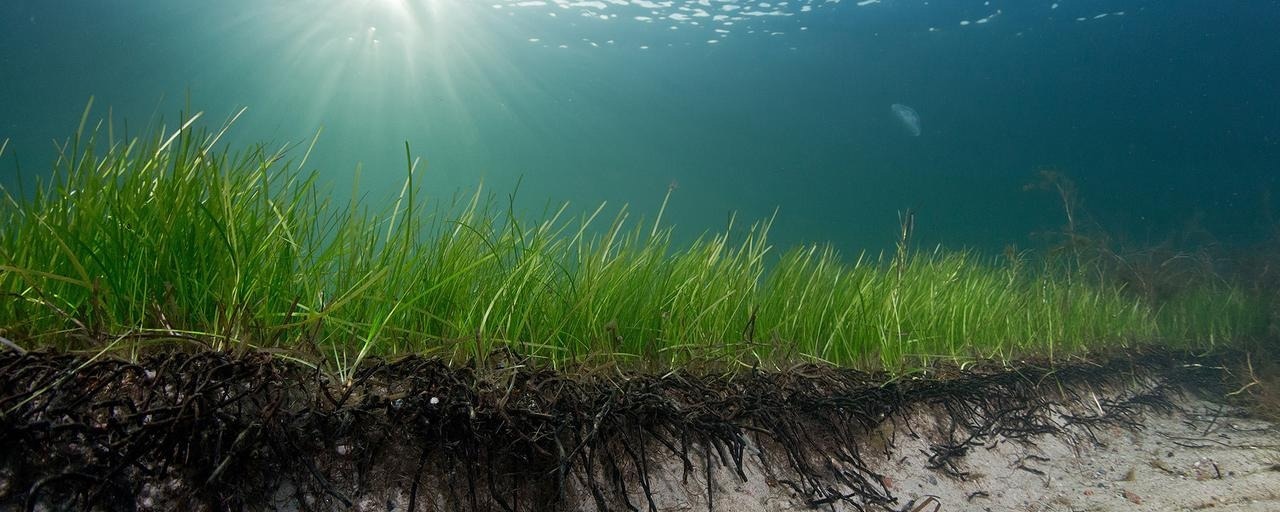When storms wash the sand from the coast out to sea, large swaths of land are devoured by the sea. Seagrass can reduce cliff erosion by up to 70%, according to a recent study led by a researcher from the University of Gothenburg, because its root mats bind the sand.
 Seagrass´ root mats can reduce coastal erosion up to 70 %. Researchers at University of Gothenburg have made test in wave tank that shows that the roots make binds the sand dunes. Image Credit: Pekka Tuuri
Seagrass´ root mats can reduce coastal erosion up to 70 %. Researchers at University of Gothenburg have made test in wave tank that shows that the roots make binds the sand dunes. Image Credit: Pekka Tuuri
The globally prevalent issue of coastal erosion is frequently addressed by adding fresh sand to the coast and beaches in areas where storms cause the most destruction. The southern Swedish coastline of Skåne is 12% vulnerable to increased rates of coastal erosion, according to a 2016 survey by the Geological Survey of Sweden. In other nations, the problem is even more severe.
Dikes made of stone and mud are built to protect the coastline in the Netherlands. Utilizing nature’s own mechanisms for preventing coastal erosion is another option. The significance of seagrass for safeguarding the coastline was investigated in this recent study.
We have seen that seagrass meadows in the coast are valuable assets in mitigating erosion. We already know that their long canopies serve as breakwaters, but now we can show that their root mats also bind together the underwater sand dunes, effectively reinforcing them.
Eduardo Infantes, Study Lead Author and Marine Biologist, Department of Biological and Environmental Sciences, University of Gothenburg
The study is published in the journal Marine Ecology Progress Series.
More Powerful Storms in the Future
Along Sweden’s coastlines, a species of seagrass known as common eelgrass can be found. Some regions, like Skåne, have extensive seagrass meadows that grow on the bottom sediments. Other locations no longer have any seagrass at all. This not only reflects a loss to the environment but may also increase the coast’s susceptibility to erosion.
Storms run the risk of intensifying as the climate changes, which could result in more coastal erosion. In areas that are less than 10 m above sea level, about 8% of the world’s population resides. Coastal erosion may affect a large population as a result of rising sea levels.
Infantes stated, “This is why it is even more important to preserve those seagrass meadows that still exist today and to replant seagrass in those places where it has disappeared. In our research, we have made successful attempts to restore common eelgrass meadows on the Swedish west coast, but if such replanting efforts are to succeed, there is a need for detailed studies of the current status seabed environment.”
In this study, samples of sandy sediments with and without common eelgrass were collected from various sites and put in a large tank that could simulate waves. The experiments showed that when seagrass is present, waves erode the sand much less.
The impact of the seagrass was less noticeable in samples taken from the muddy seabed, according to the researchers. This is less significant, though, because the muddy seabed is more frequent in fjords and other places that are less exposed to waves.
More Factors in Field Tests
The subsequent phase will be to leave the laboratory setting and measure the amount of sand erosion on a coastline's exposed shoreline. The erosion can then be influenced by additional factors like currents, boat traffic, river inflows, etc.
“It is more complicated in the field, but we have created realistic storm waves in our experiments and the seagrass has clearly shown a protective effect against erosion. I think we will be able to demonstrate the similar effects in field tests,” Infantes further added.
Journal Reference:
Infantes, E., et al. (2022) Seagrass roots strongly reduce cliff erosion rates in sandy sediments. Marine Ecology Progress Series. doi:10.3354/meps14196